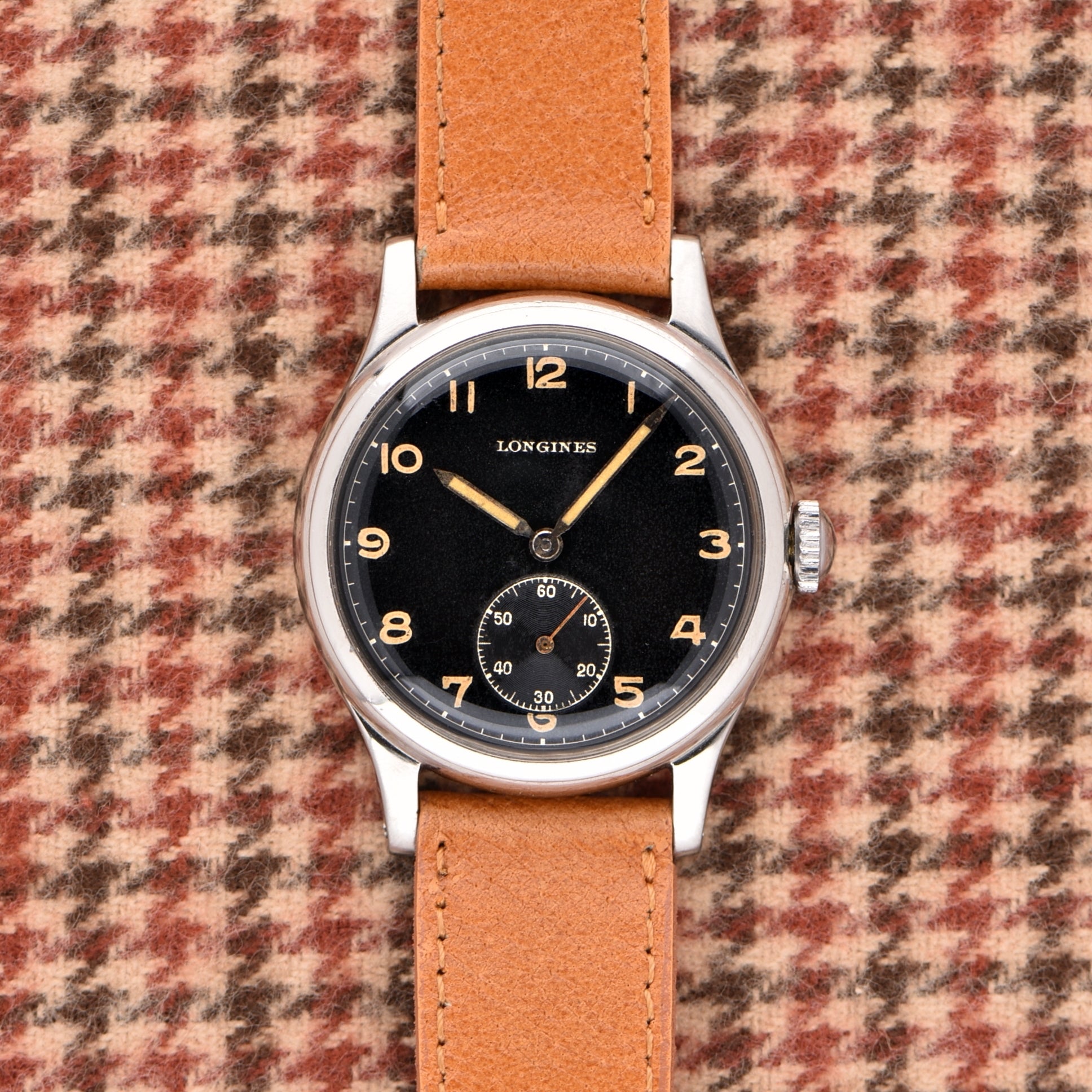
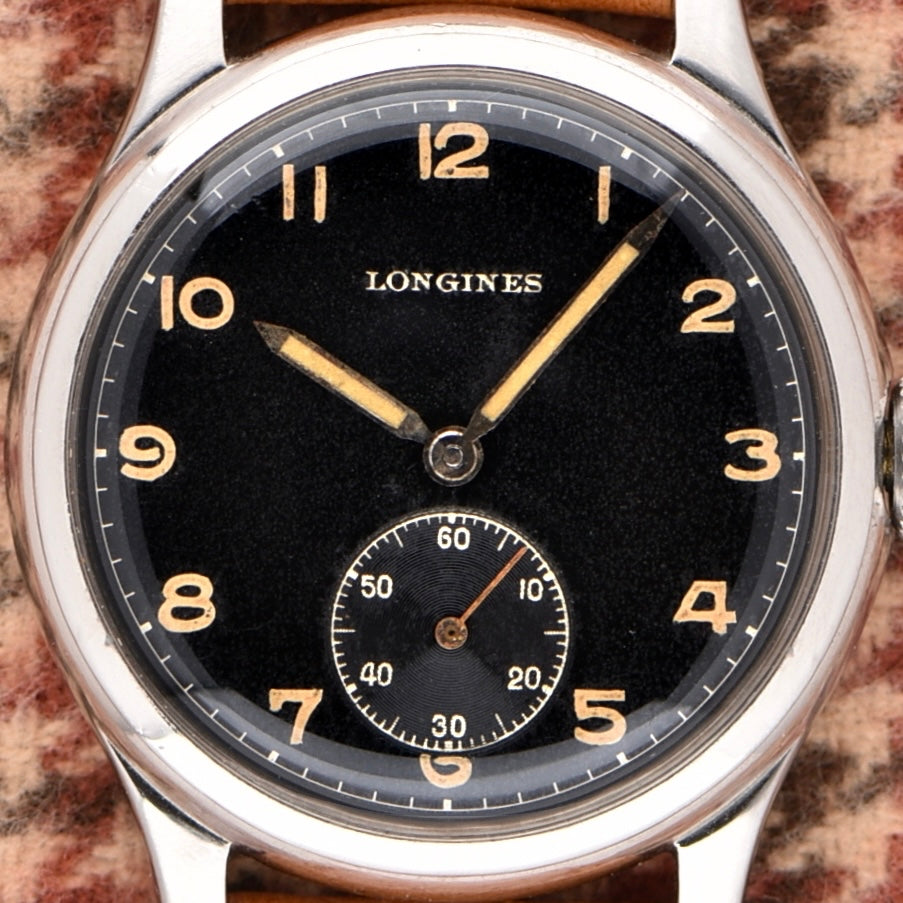
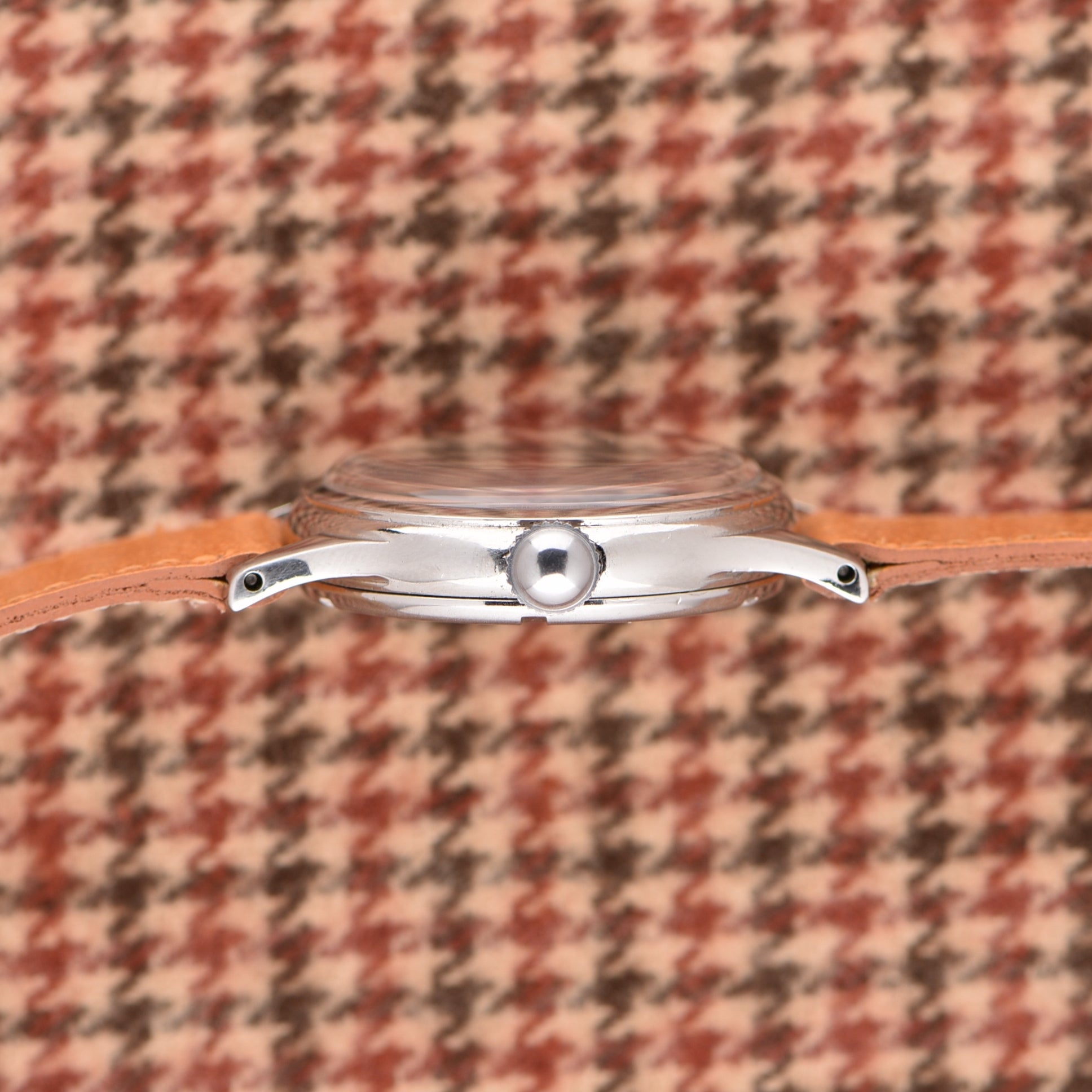

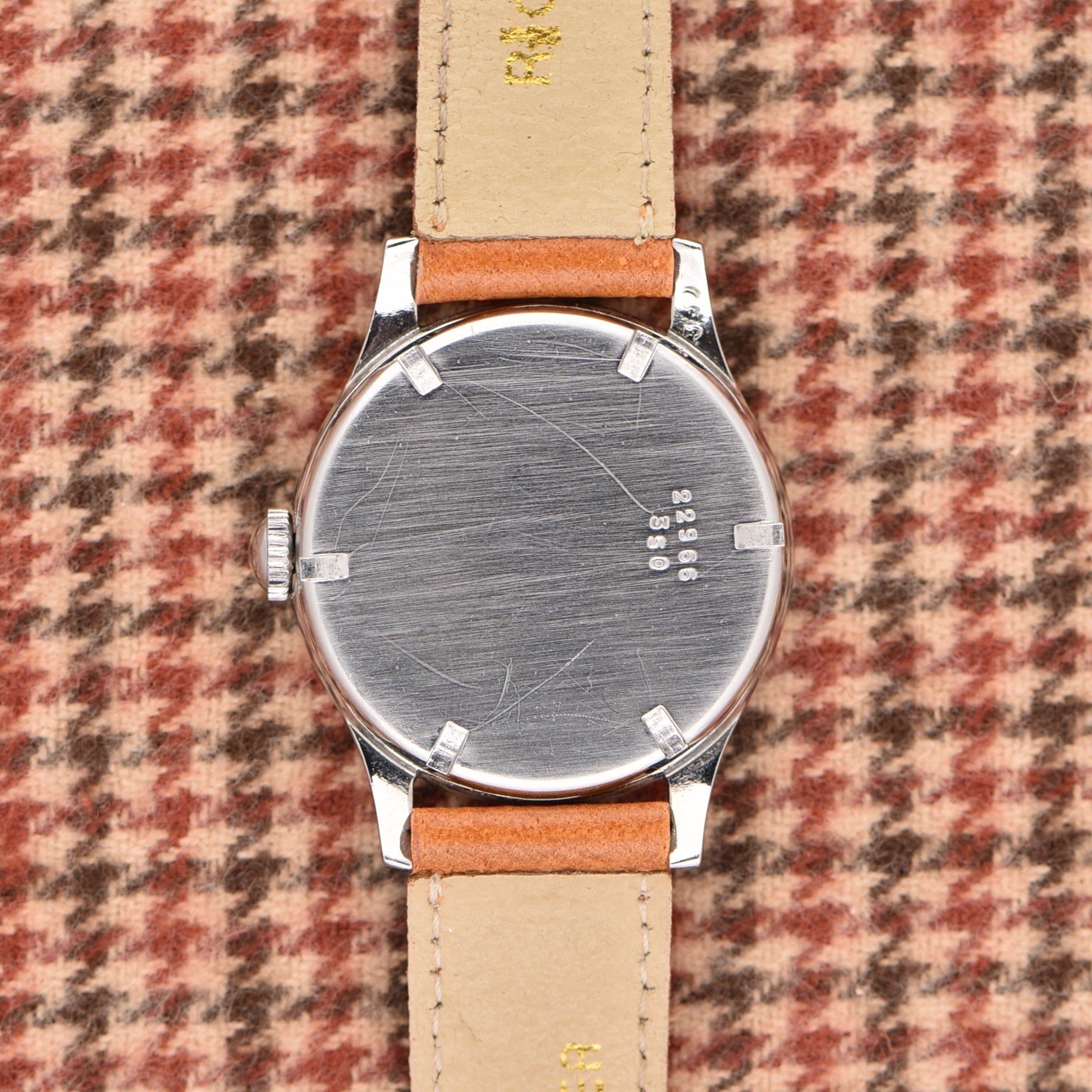

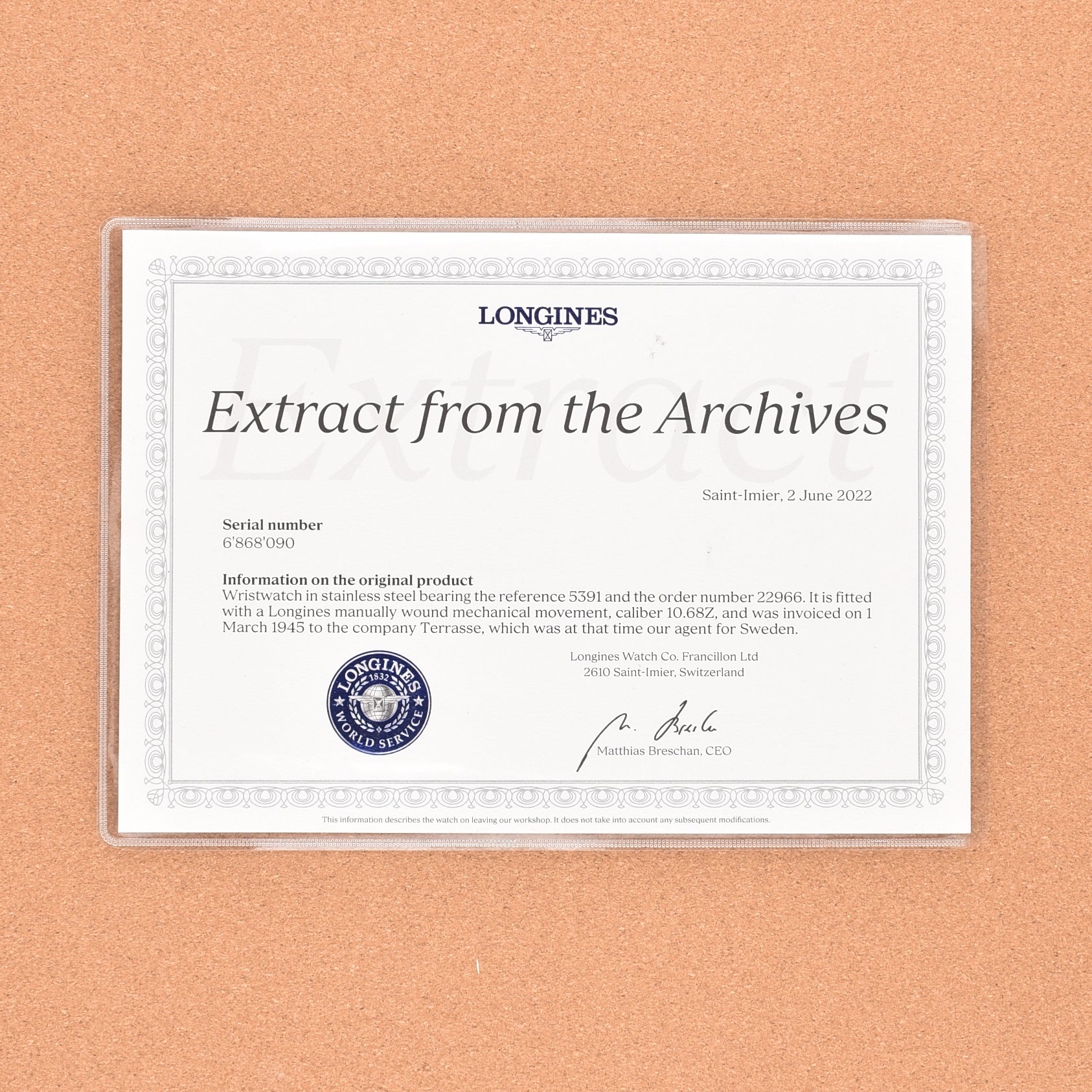
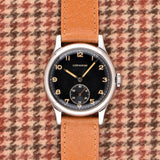

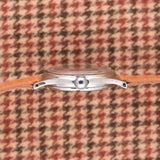
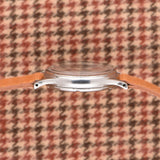

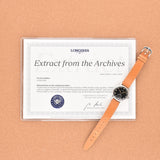
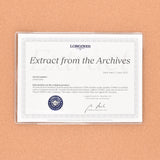
1945 Longines Sei Tacche Black Gilt Dial - Archives
- Reference 5391
- Extract From Longines
- Wire Price $850
- Specifications
- The Story
- The Brand
Year: 1945
Model: Sei Tacche
Case Diameter: 32mm
Lug to Lug: 38.8mm
Case: Steel
Condition: In regular, worn, condition
Dial: Black gilt
Movement: Manual winding
Condition
Condition-wise, this is a stunner. The case looks great with normal wear. The original lume is still all intact and has gained beautiful patina, and the same goes for the dial. The gilt dial has a speckled gloss texture from aging that looks amazing. To think this watch is almost 80 years old is crazy. This Sei Tacche also comes with the Extract from Longines.
The Italian word "tacche" refers to the number of wrench notches in the case back, which gained popularity in the 1930s. Screw-in backs were later used by various manufacturers, including Oyster, Taubert Freres, and others. The most widespread type of screw-in backs had ordinary notches for simple two-point or three-point wrenches. Tre tacche, meaning three wrench notches, was popular from the late 1930s to mid-1940s and was used by Longines collectors in various watches. Three-notch backs are less common but not uncommon, and Longines watches with three-notch backs are often featured. The origin of these nicknames is Italian, and the number of notches in the case back is not significant. The popularity of Longines watches with three-notch backs is largely due to their design and dials, rather than the number of notches.
With that being said, the reference 5391 is a Sei Tacche. This example comes with a very nice gloss black dial with very nice lume. The watch comes with the Archives from Longines dating and referencing the watch.
In 1832, Swiss watchmaker Auguste Agassiz established a watch company in Saint-Imier with the help of two partners, lawyers and brothers-in-law Henri Raiguel and Florian Morel. The company's name was Raiguel Jeune & Cie., but by 1846, both partners had retired from the watch industry, leaving Agassiz solely in charge. In 1852, Agassiz brought in his nephew Ernest Francillon to help run the business, who was responsible for important decisions such as the establishment of the first Longines factory and the Longines name itself.
Under Francillon's control, the growing watch company set up its first manufacturing factory in 1867, located in an area of southern Saint-Imier known as Es Longines (meaning “long meadows”). To help lead the new factory, Francillon appointed a talented engineer named Jacques David as the Technical Director for Longines. David was sent to the United States to attend the 1876 World's Fair in Philadelphia, where he gathered ideas about America's approach to industrialized watchmaking and created a 108-page report detailing his findings. Upon returning to Switzerland, Longines began implementing some of the strategies that Jacques David had learned from American watchmakers, making Longines a pioneer in industrialized timepiece production.
The same year Longines established its first factory, it also produced its first movement (the 20A) and by 1878, it was already producing a simple chronograph movement (the 20H; patented by watchmaker Alfred Lugrin). These early advancements gave the brand an advantage in the world of competitive sports, particularly horse racing. As early as 1886, Longines was already the supplier of timepieces to most sports officials in New York.
Longines is most famous for its contributions to navigation and the early days of flight. In 1919, Longines was named the official supplier of timepieces for the International Aeronautical Federation and collaborated with US Navy officer Philip Van Horn Weems to create the Longines Weems Second-Setting Watch in 1927. After making his historic non-stop solo flight over the North Atlantic, American pilot Charles Lindbergh worked with Longines to create the Lindbergh Hour Angle Watch in 1931.
Longines continues to be a part of the Swatch Group and operates out of its perennial home in Saint-Imier, producing a wide variety of different Swiss-made timepieces. The brand continues to play an active role in the worlds of aviation, equestrian, and alpine skiing, and has been gaining traction among buyers in recent years.
1945 Longines Sei Tacche Black Gilt Dial - Archives
Authenticity Guaranteed
All our watches are carefully inspected to insure and guarantee the authenticity.
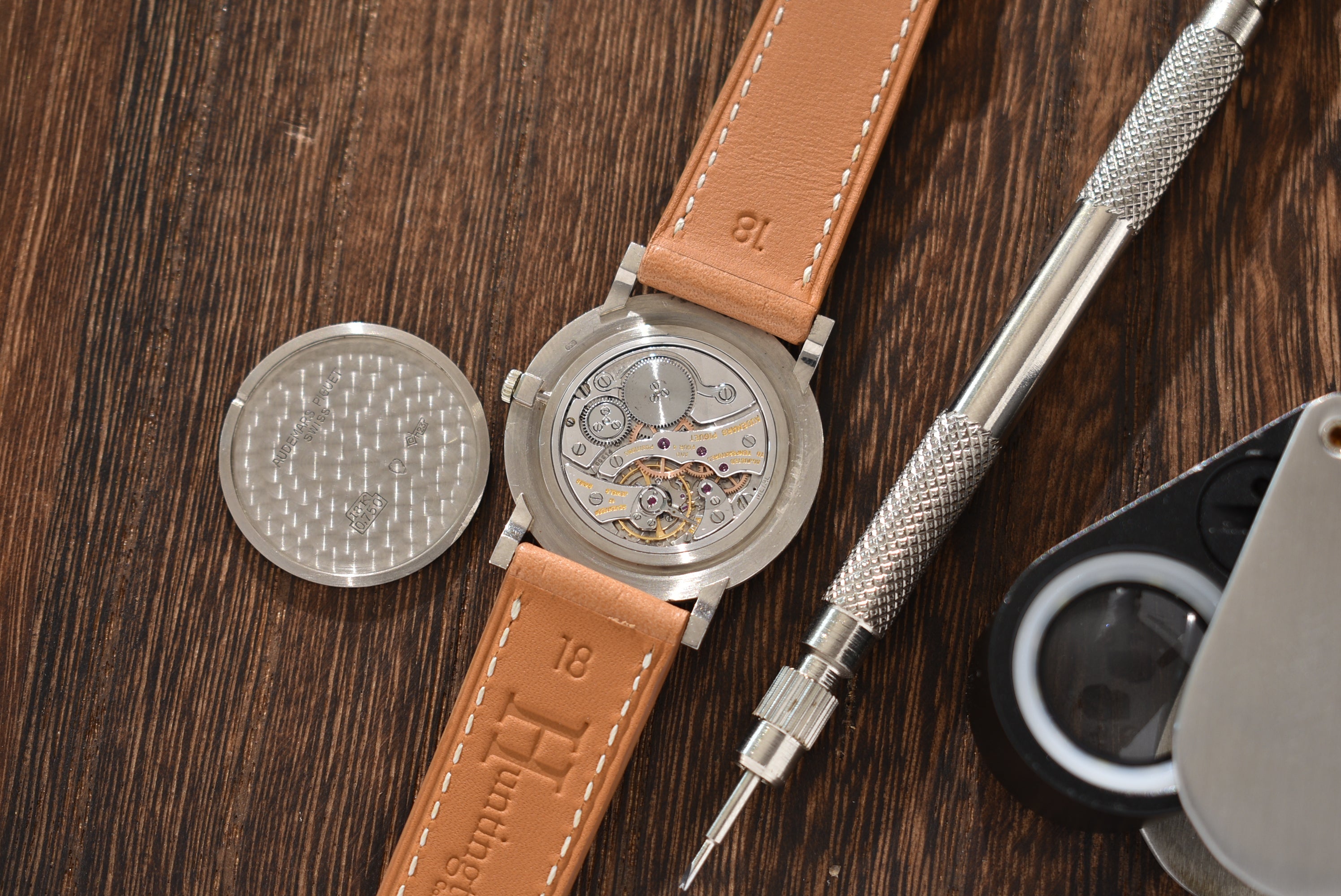
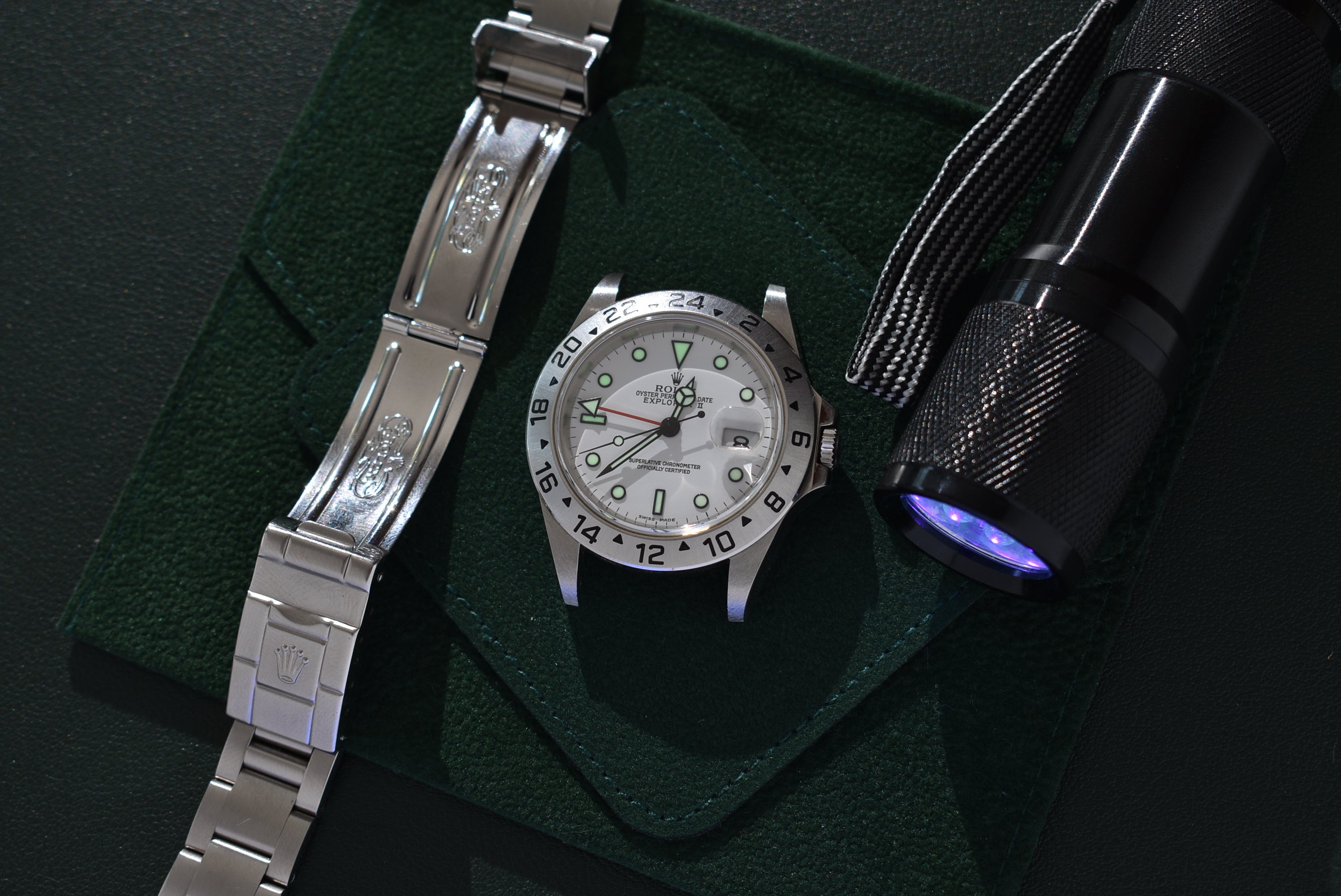
The Details
All our watches are scrutinized during inspection to make sure our descriptions are as accurate as possible.
- Related products
- Recently viewed
Cart
No more products available for purchase
Your Cart is Empty
Pair with
- Reference 5391
- Extract From Longines
- Wire Price $850
- Specifications
- The Story
- The Brand
Year: 1945
Model: Sei Tacche
Case Diameter: 32mm
Lug to Lug: 38.8mm
Case: Steel
Condition: In regular, worn, condition
Dial: Black gilt
Movement: Manual winding
Condition
Condition-wise, this is a stunner. The case looks great with normal wear. The original lume is still all intact and has gained beautiful patina, and the same goes for the dial. The gilt dial has a speckled gloss texture from aging that looks amazing. To think this watch is almost 80 years old is crazy. This Sei Tacche also comes with the Extract from Longines.
The Italian word "tacche" refers to the number of wrench notches in the case back, which gained popularity in the 1930s. Screw-in backs were later used by various manufacturers, including Oyster, Taubert Freres, and others. The most widespread type of screw-in backs had ordinary notches for simple two-point or three-point wrenches. Tre tacche, meaning three wrench notches, was popular from the late 1930s to mid-1940s and was used by Longines collectors in various watches. Three-notch backs are less common but not uncommon, and Longines watches with three-notch backs are often featured. The origin of these nicknames is Italian, and the number of notches in the case back is not significant. The popularity of Longines watches with three-notch backs is largely due to their design and dials, rather than the number of notches.
With that being said, the reference 5391 is a Sei Tacche. This example comes with a very nice gloss black dial with very nice lume. The watch comes with the Archives from Longines dating and referencing the watch.
In 1832, Swiss watchmaker Auguste Agassiz established a watch company in Saint-Imier with the help of two partners, lawyers and brothers-in-law Henri Raiguel and Florian Morel. The company's name was Raiguel Jeune & Cie., but by 1846, both partners had retired from the watch industry, leaving Agassiz solely in charge. In 1852, Agassiz brought in his nephew Ernest Francillon to help run the business, who was responsible for important decisions such as the establishment of the first Longines factory and the Longines name itself.
Under Francillon's control, the growing watch company set up its first manufacturing factory in 1867, located in an area of southern Saint-Imier known as Es Longines (meaning “long meadows”). To help lead the new factory, Francillon appointed a talented engineer named Jacques David as the Technical Director for Longines. David was sent to the United States to attend the 1876 World's Fair in Philadelphia, where he gathered ideas about America's approach to industrialized watchmaking and created a 108-page report detailing his findings. Upon returning to Switzerland, Longines began implementing some of the strategies that Jacques David had learned from American watchmakers, making Longines a pioneer in industrialized timepiece production.
The same year Longines established its first factory, it also produced its first movement (the 20A) and by 1878, it was already producing a simple chronograph movement (the 20H; patented by watchmaker Alfred Lugrin). These early advancements gave the brand an advantage in the world of competitive sports, particularly horse racing. As early as 1886, Longines was already the supplier of timepieces to most sports officials in New York.
Longines is most famous for its contributions to navigation and the early days of flight. In 1919, Longines was named the official supplier of timepieces for the International Aeronautical Federation and collaborated with US Navy officer Philip Van Horn Weems to create the Longines Weems Second-Setting Watch in 1927. After making his historic non-stop solo flight over the North Atlantic, American pilot Charles Lindbergh worked with Longines to create the Lindbergh Hour Angle Watch in 1931.
Longines continues to be a part of the Swatch Group and operates out of its perennial home in Saint-Imier, producing a wide variety of different Swiss-made timepieces. The brand continues to play an active role in the worlds of aviation, equestrian, and alpine skiing, and has been gaining traction among buyers in recent years.
